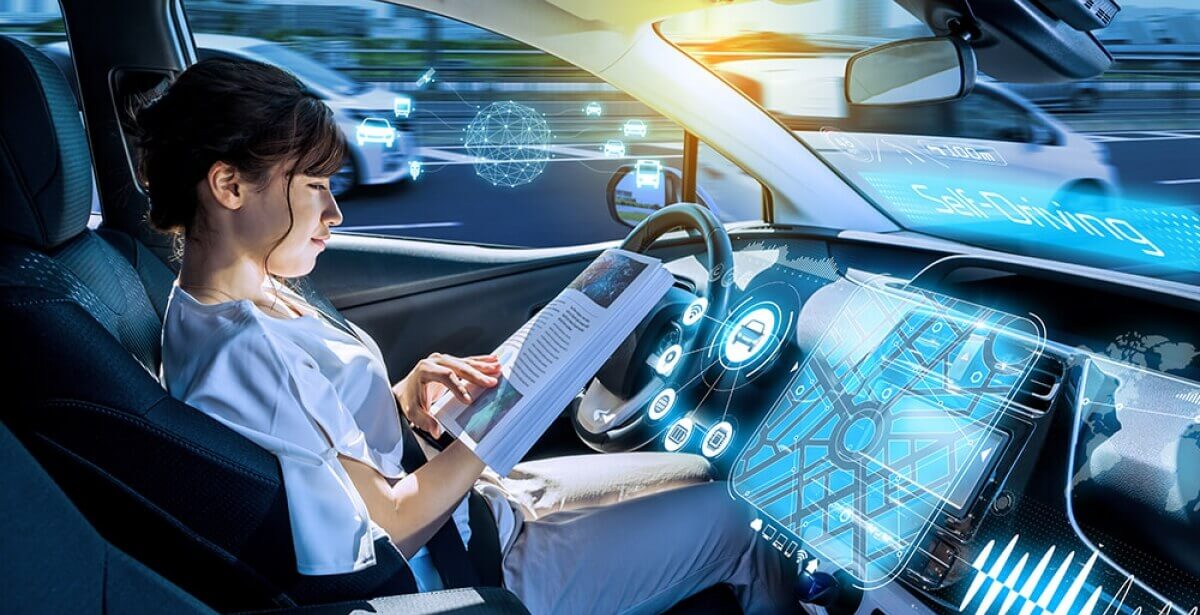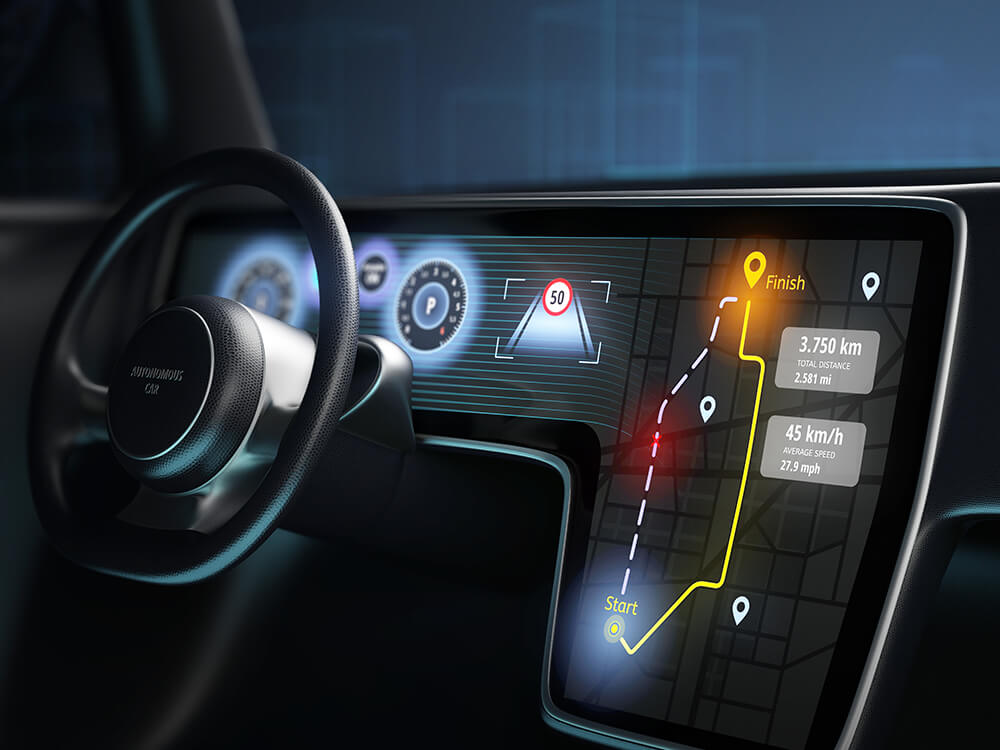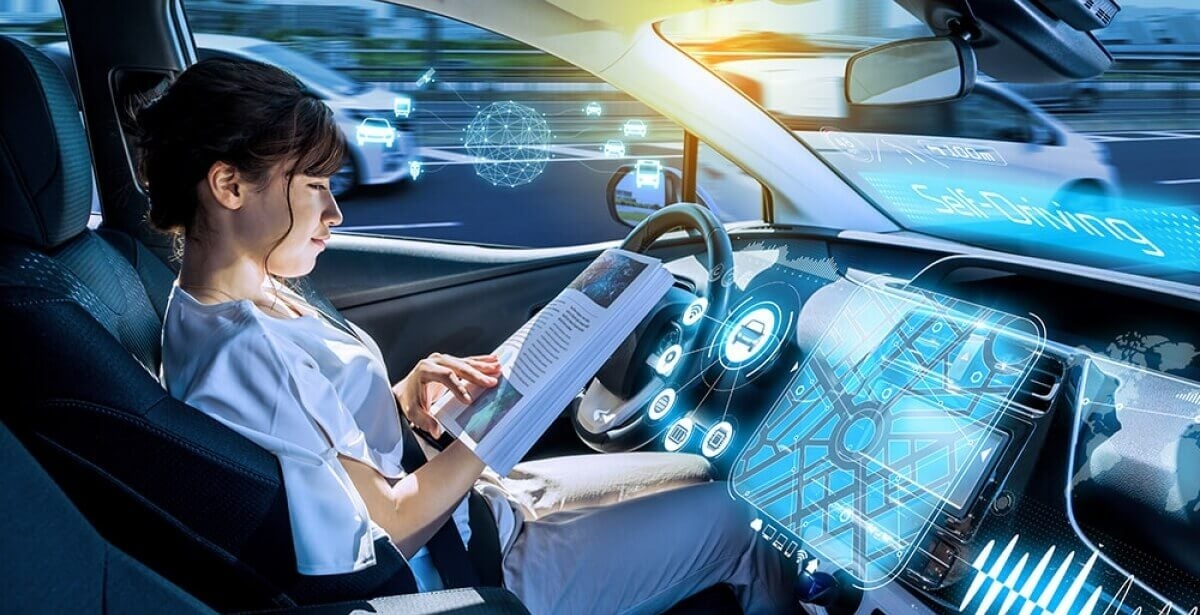
Electrical & Computer Engineering and Autonomous Vehicles
You oversleep for an early morning meeting with an important client. Now, in addition to running late, you also have no time to put the final touches on your presentation. Harried, you get ready, walk to your car, drive to your office in heavy traffic, park far away from the front door, and hustle into work. You are anxious and not prepared.
Now imagine this scenario:You oversleep for an early morning meeting with an important client but you are not panic-stricken. You call for your autonomous vehicle while you are getting ready. The car comes right to your door. You hop in, fine-tune your presentation while the car does all the driving and worries about traffic. The car drops you off in front of your office door and you stride into your presentation calm, prepared, and ready to impress.

How Do Autonomous Vehicles Work?
GM, Ford, Volkswagen, and BMW are just a few of the many car manufacturers researching, creating, and innovating the technology used for autonomous vehicles and robotics. Google and Apple, not generally known for transportation solutions, are also in the race to develop autonomous vehicles as well as other robotics solutions designed to make work and travel safer and more efficient.
Through a complex combination of cameras providing a 360-degree range of vision around the car, sensors, radar, and software, as well as artificial intelligence and road sensors, autonomous vehicles are capable of controlling, driving, and navigating the terrain around them.

In 2014, The Society of Automotive Engineers established a five-level classification for defining autonomous capabilities available in vehicles. In the first three stages, the driver performs part or all of the driving tasks. In the last three stages, the automated driving systems perform all of the driving tasks (Blaine, 2017).
Level 0: No driving automation.
Level 1: Driver Assistance: Almost all cars have this feature – otherwise known as adaptive cruise control.
Level 2: Partial Driving Automation: Adaptive cruise control and lane centering technology.
Level 3: Conditional Automation: In certain situations, the car can drive itself, but the human driver must be prepared to offer assistance by resuming control of the vehicle.
Level 4: High Automation: At this level, the car can completely drive itself, although there still are controls and a steering wheel for human assistance.
Level 5: Full Automation: At this level, “the steering wheel is optional. The front seats might face backwards to make this a social space, because the car neither needs nor wants your help. Full-time automation of all driving tasks on any road, under any conditions, whether there's a human on board or not” (Blain, 2017).
Benefits of Autonomous Vehicles
Perhaps the greatest benefit of autonomous vehicles will be fewer accidents. The Association for Safe International Road Travel reports, “over 37,000 people die in crashes each year and an additional 2.35 million are injured or disabled” (ASIRT, 2018). Since most of these accidents are caused by human error, it is expected that use of autonomous vehicles will sharply decrease these numbers. While this is the most obvious benefit, there are several more:
- provision of mobility for seniors and people with disabilities
- reduction of cost due to more prevalent use of ride-sharing
- reduction of harm to the environment as a result of less traffic on the road and better fuel economy
- savings of personal time – while the car is driving itself, you could be preparing for a work meeting, solving a puzzle, or catching up on your current book
- increase in demand for new jobs in the automotive and technology industries

Welcome to Your Career in Advanced Mobility
Kettering University Online is now offering a Master of Science in Engineering Electrical and Computer Engineering with a focus on Advanced Mobility degree. This groundbreaking program, the first of its kind, is designed to prepare engineers to address the industry’s demand for professionals eager to work on projects in this new technological landscape. The program has also been recently given a #1 rating for online engineering programs.
If you are an engineer interested in electric vehicles, autonomous vehicles, mobile robotics, and artificial intelligence and in playing a leading role in re-shaping the automotive and/or robotics industry, enrolling in this program is your logical next step.
The comprehensive curriculum of this groundbreaking degree includes courses such as:
- Modeling of Dynamic Systems
- Digital Signal Processing for Automotive Engineering
- Mobile Robotics
- Artificial Intelligence for Autonomous Driving
- Automotive Control Systems
- Machine Drives for Electric Vehicles
- Advance Power Electronics
While in this program, students build on their existing STEM education by modeling and examining the dynamic systems that make autonomous vehicles and mobile robotics possible. Upon completion of the program, graduates will be positioned to lead teams charged with the next phase in automotive engineering.

This industry offers many opportunities for skilled and highly qualified engineers. In addition to innovating the technologies of the vehicles themselves, more work must be done to create the future transportation and infrastructure. “As driverless vehicles become more widespread, it will be become necessary to implement a quality road system. Many say the current infrastructure is a huge roadblock with inconsistent signage and traffic controls, and poor roadways throughout America” (Phillips, 2018).
This new MSE-ECE - Advanced Mobility degree offered by Kettering University Online is the only program custom designed to enable engineers to build on their expertise by focusing on the creation, testing, and integration of the dynamic systems that control mobility. By offering the definitive education for advanced mobility, Kettering University Online continues its proud tradition of working with partners in the automotive industry as well as combining experiential and applied learning to empower students to change the direction of their careers as well as the everyday experiences of everyone else!
Learn More About Our Masters Program
Sources:
Association for Safe International Road Travel (2018). Annual United States road crash statistics. Retrieved from http://asirt.org/initiatives/informing-road-users/road-safety-facts/road-crash-statistics
Phillips, S. (2018). How autonomous vehicles are driving change in the engineering industry. Retrieved from https://iconnectengineers.com/blog/autonomous-vehicles-driving-change/
Blain, L. (8, June, 2017). Self-driving vehicles: What are the six levels of autonomy? Retrieved from https://newatlas.com/sae-autonomous-levels-definition-self-driving/49947/

